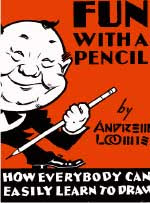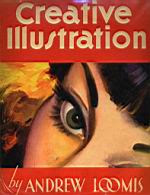 Today I find myself looking through tons of photos of cars trying to find the perfect match for my new book. After some time searching I discovered some great websites that actually sell cheap die cast models of cars. I know this tid bit of info will be extremely helpful later down the road with other projects and with this one. Typically I will be forced to work from photos for most everything I illustrate. Often for more complex objects and characters I have to make models in order to see how the light falls across forms. However I knew there would be no easy way to create my own model of a car from scratch so buying a diecast model should be the perfect solution. Mainly I want to share a couple of links for that as I'm sure others will eventually be faced with a simialr problem.
Today I find myself looking through tons of photos of cars trying to find the perfect match for my new book. After some time searching I discovered some great websites that actually sell cheap die cast models of cars. I know this tid bit of info will be extremely helpful later down the road with other projects and with this one. Typically I will be forced to work from photos for most everything I illustrate. Often for more complex objects and characters I have to make models in order to see how the light falls across forms. However I knew there would be no easy way to create my own model of a car from scratch so buying a diecast model should be the perfect solution. Mainly I want to share a couple of links for that as I'm sure others will eventually be faced with a simialr problem.Secondly I didscovered some amazing diecast models of much older cars like this fire truck which would be a lot harder to go see in person. Buying a diecast could be the solution to doing historical paintings of rare cars. I could even see these older model cars being a great starting point or inspiration for creating futuristic car designs. The older cars have way more class and style than all the new stuff they are coming out with. One link to cheap die cast cars is http://www.diecastmodelswholesale.com/servlet/the-Fire-Engine-Diecast/Categories
there are plenty of websites I found that sell these sorts of things but this is one of the best I found so far. Secondly I found a great website with links to paper models of objects including things like cars, buildings, insects etc. One of the cooler ones I found was this hornet model. You can go on there and download the whole thing, cut it out and glue it together. The link, http://images.google.ca/imgres?imgurl=http://papermodels.files.wordpress.com/2009/09/suzuki-car-sx4-wrc.jpg&imgrefurl=http://papermodels.wordpress.com/category/cars-tractors-boxes-rally-f1/&usg=__FBp_c7hbp1c0KrwQO88au1a7oAk=&h=338&w=450&sz=59&hl=en&start=16&sig2=UeRo2r1ckeCUM3LnN46Lhw&um=1&tbnid=UEUboawEmWx_jM:&tbnh=95&tbnw=127&prev=/images%3Fq%3Dsuzuki%2Bmodel%2Bcar%26hl%3Den%26rlz%3D1T4GWYE_enUS345US345%26sa%3DN%26um%3D1&ei=H80aS4jWO47M8Qa8ueHlAw

















